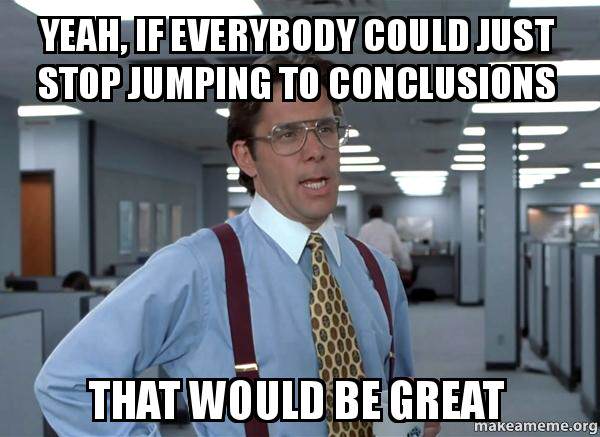Have you ever misinterpreted what someone said, or why they said it, responded defensively and ended up needing to apologize for your response? Or, have you ever been driving down the freeway, minding your own business, driving the speed limit and gotten cut off by someone? If you have, and you are like me then you probably shouted something like “jerk” or “idiot”. (By the way, as my 6-year old grandson reminded me from the back seat the other day….the other driver can’t hear you!) As it turns out, we are actually cognitively hardwired to respond quickly with an attributional interpretation of what we see and hear. It is how we attempt to make sense of our fast paced, complex world. Daniel Kahneman in his 2011 book, “Thinking, Fast and Slow” proposes that we have two different cognitive systems, one designed for automatic, rapid interpretation of input with little or no effort or voluntary control (System 1) and the other designed for conscious, effortful and rational interpretation of information (System 2). We spend most of our time utilizing System 1 in our daily lives because it requires much less effort and energy as it helps us make sense of our busy world. The problem is that System 1 analysis is based on limited data and depends on past experience and easily accessible knowledge to make interpretations, and thus is often wrong. When I interpreted the actions of the driver that cut me off to be the result of his intellect (“idiot”), it was System 1 processing that led to that interpretation. I “jumped to a conclusion” without sufficient processing. I didn’t allow System 2 to do it’s work. If I stay with my System 1 interpretation, then the next time I get cut off I am even more likely to see an “idiot” because that interpretation is the most easily accessible one because of the previous experience, but if I allow System 2 to operate I can change the way I perceive future events of this nature. System 2 allocates attention and effortful processing to alternative interpretations of data/events. It requires more time but also increases the probability of being right in our interpretation of the data. Asking myself if there could be other reasons why the driver cut me off is a System 2 function. Identifying and evaluating those possibilities is also a System 2 function. Engaging in System 2 cognitive processing can alter the information stored in my brain and thus affect the way I perceive and respond to similar events in the future.
So how can we stop jumping to conclusions?
It would be great if we could override our brains wiring and skip System 1 processing but we can’t. Actually, without System 1 we would not be very efficient because we would over analyze just about everything. What we can do is recognize when we are jumping to conclusions (guessing about intent for example) and force ourselves to focus our attention on other possible explanations, i.e. activate System 2. You need to find your “guessing trigger” to signal you to call up System 2. When you realize that you are thinking negatively (“idiot”) about someone or feeling a negative emotion like anger or frustration, simply ask yourself…. “Is there something I am missing here?” “Is there another possible explanation for this?” Simply asking this will activate System 2 processing (and also calm you down) and lead to a more accurate interpretation of the event. It will help override your natural tendency to jump to conclusions. It might even keep you from looking like an “idiot” when you have to apologize for your wrong interpretation and action.


